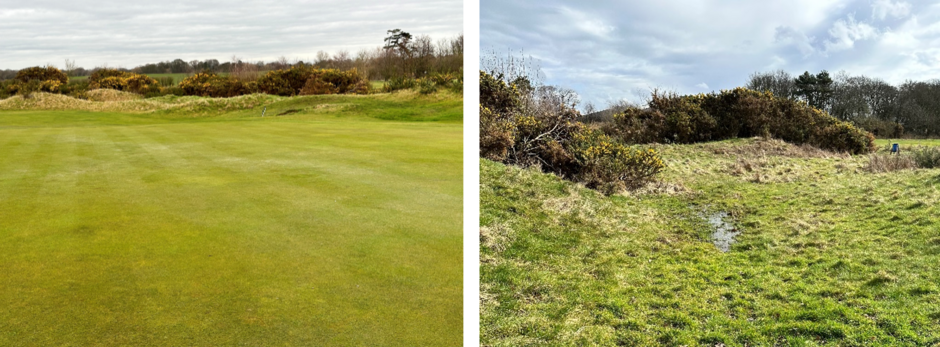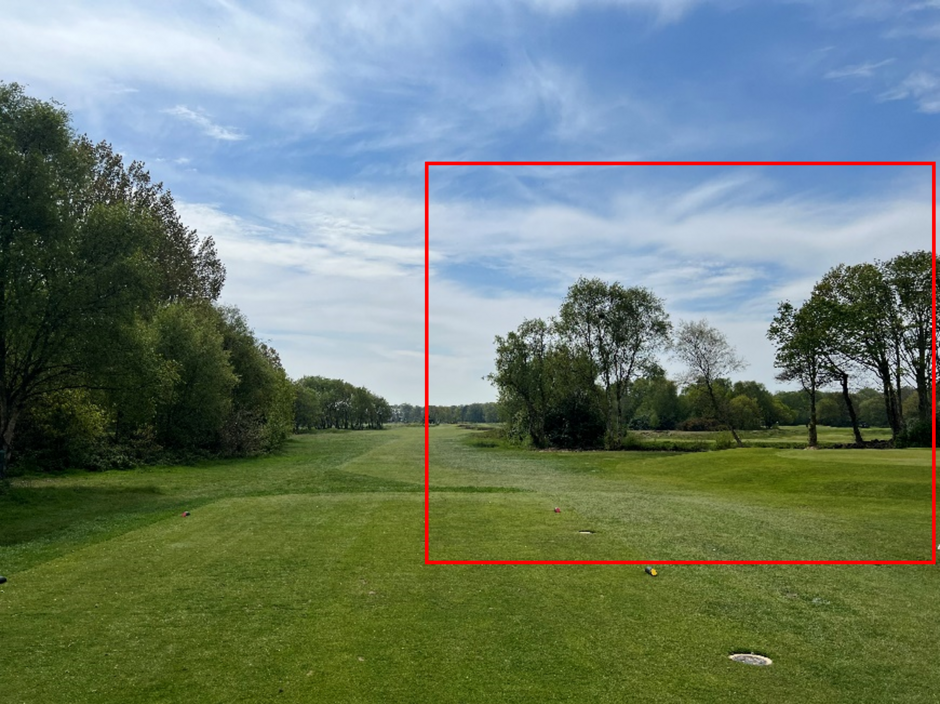Introduction
Dear Members
It has been a few months since the last Course Manager’s Blog but plenty of activity has been on-going out on the course, bringing to a close the winter maintenance programme for 2022/23 and planning for the future.
Joe and I wish to provide a summary of the works undertaken throughout the winter period, the challenges experienced, how we continue to try and combat these for future years and the latest agronomy report from the R&A which we will now start with.
The R&A – External Agronomy Support/Advice
Members will note the change in our external agronomy partner, which has moved from STRI to the R&A. This comes on the back of movement with the availability of agronomy support from within various organisations, the main bodies being STRI and the R&A who now provide a commercial service from within their business.
Last year, we made the decision to move to the R&A as we felt the industry-leading experts, specifically within golf, now mainly fall under the umbrella of the R&A and therefore provides continued steadiness and support to our team.
Our lead adviser at the R&A is and will continue to be Alastair Beggs.
For those unfamiliar with lead agronomists, Alastair is arguably the best in the business. He holds the position of Head of Sustainable Agronomy Services, which he moved to following a long period of Head of Agronomy Service to Golf for STRI. In his career Alastair has overseen the agronomy support for many major events ranging from the Open Championship to the Amateur Championship.
The latest report can be found by clicking here.
Drainage
It is common for the 3rd and 15th greens to become saturated during the winter period. Whilst further investigation is required on these surfaces, we can only assume at this time that the general construction is creating a problem with the greens' ability to draw water through the various layers. This is something that we will continue to assess, whilst attempting to make improvements to ensure we can provide better year-round surfaces.
Focussing attention to the 5th, for the first time the green became heavy underfoot. Detailed investigations have shown that the gorse roots to the left of the 5th have penetrated the drain lines. Once the water table drops to a level that permits, we will look to carry out some repair work on this.

Holes 3 & 7
The most noticeable item of work carried out this winter was the removal of the rhododendron to the right-hand side of the 3rd and 7th holes. As is often the case, when removing this type of shrub, wholesale removal of trees is often required. We wish to stress that the retention of trees is paramount although we are often left with little choice but to remove surrounding trees due to the damage caused by the rhododendron bush itself.
The toxins responsible for the poisonous effects of Rhododendron are grayanotoxins. These are highly oxygenated diterpenoids that have been presumed to be produced elsewhere in the plant as a natural chemical defence. It is this chemical reaction that often make surrounding trees and plants (grass included) deteriorate in condition, eventually suffocating.
The removal of rhododendron plants around the site is done so to enable other species to thrive. Below, highlighted in red, is an example from this area where the trees were in a condition to enable us to retain them and provide an environment in which they will flourish.
We felt it important to highlight these key points behind undertaking such works. It is work that has been advised for many years, referencing back as far as the 2014 Ecology Report, and as a result will be visible over the coming years with other areas such as the left of the 1st tee / 18th green and 2nd tee being other areas in desperate need of managing due to the impact they’re having on the surrounding playing surfaces.
The area to the 3rd hole now presents clear views of the hole reducing the health and safety risk from the tee shot. Several items of feedback regarding golfers now having the ability to play up the 7th hole was received, however prior to instructing the work, we carried out several inspections to ensure confidence in this option not being viable.
Quantifying this, the angle from the 7th hole is fundamentally blocked by the copse of pine trees located to the side of the 7th teeing ground. The area in which any advantage gained is approximately 270 yards from the teeing ground, but only provides a landing area of approximately 25 yards so there is little gain to be had. These comparable landing zones are evident in the below image taken prior to any works being undertaken:
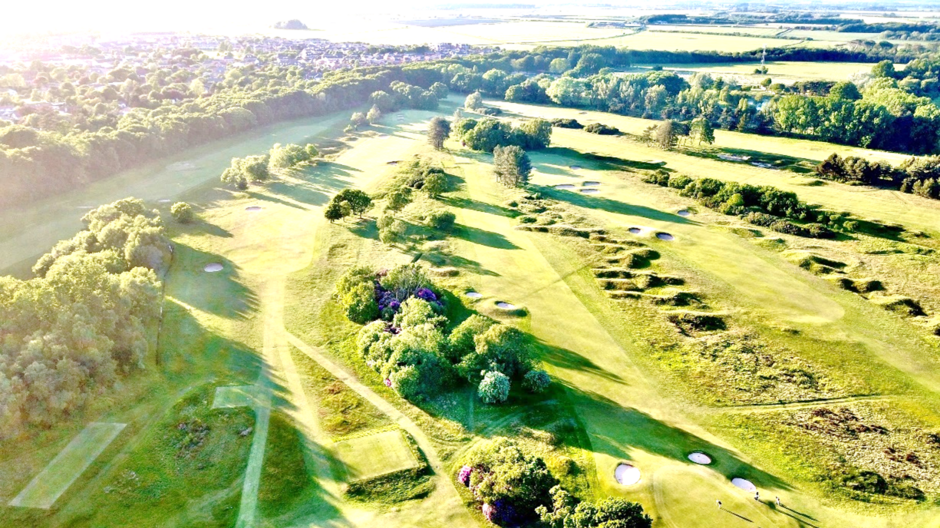
The ecology benefits of opening up this area and creating a low-lying wetland is also significant. It is estimated that around 40% of the world’s biodiversity is homed in such areas as well as acting as water sources, purifiers and often store more carbon than forests.
As we have repeatedly advised, trying to manage water in our own environment is very important and one of the most significant items moving forward, hence the increase in wetland areas. By increasing the holding capacity in this area, we envisage that we will now be able to move water from the 7th hole to ensure more playable surfaces throughout the year. Prior to this work being completed, such opportunities were impossible due to the drains network system being inaccessible.
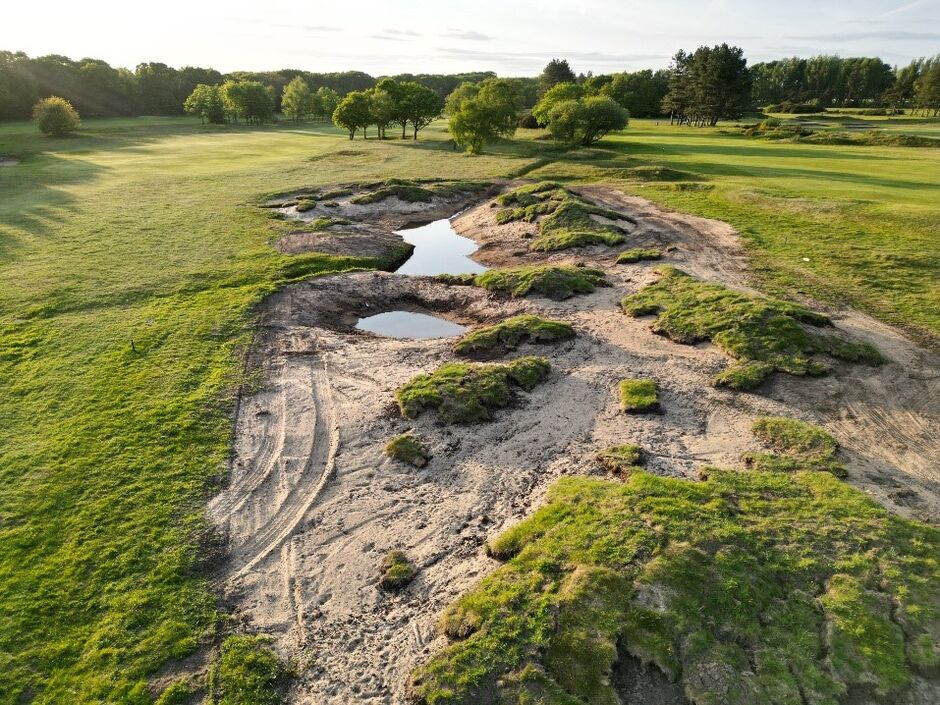
PRACTICE NETS
In November 2021, we experienced significant storm damage at which time highlighted the inadequate warm-up facilities in the event that the practice ground be unavailable. With an increase in the wet weather often experienced in winter, we felt it important to improve this member facility.
With increased space, we are now able to provide double the capacity for members to safely warm up. Below evidences the upgrade in facilities now available to Members:

bunker and tee RENOVATIONS
Throughout the winter programme, the team re-built the following tees, improving the level and consistency of the playing surfaces for the season ahead:
- 1st Hole
- 10th Hole
- 11th Hole
- 12th Hole
- 18th Hole
Below is an image of the developed tee on the 10th hole and leveling work being carried out:
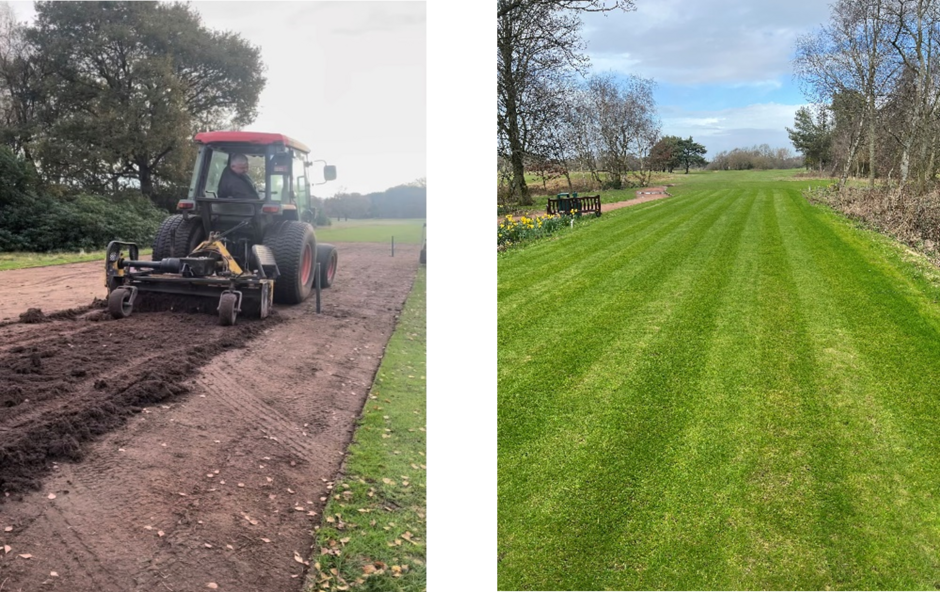
This year, we completed no fewer than 20 bunker rebuilds. We again took advantage of revetment turf from on-site meaning we were able to complete such rebuilds in an economical way. Below are some examples of the rebuilds that have taken place over the winter:
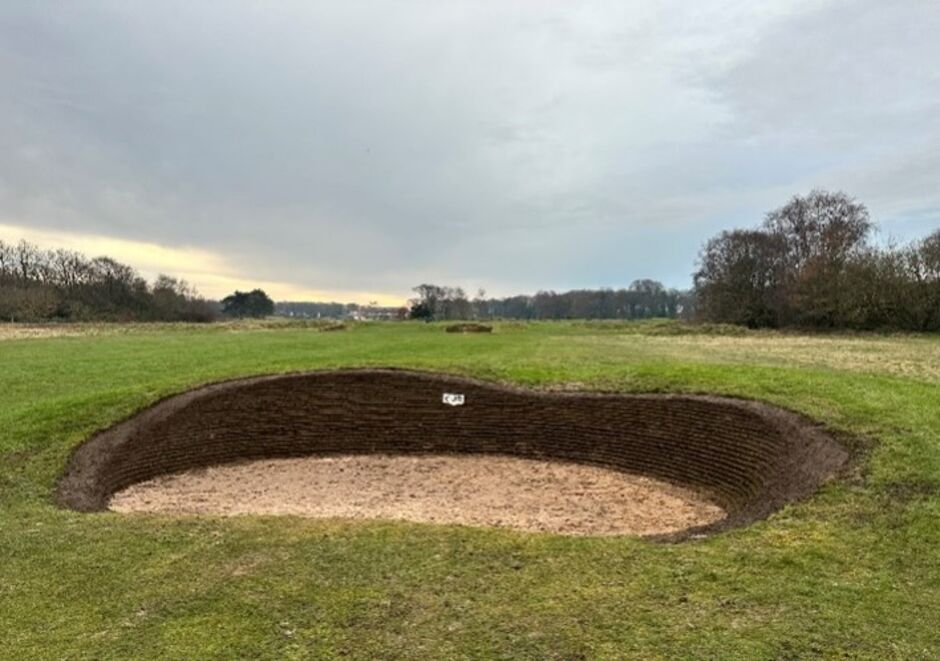
Conclusion...
In addition to detail provided above regarding the work undertaken, we would again highlight previous information provided on some key agronomy practices such as overseeding which has taken place this year. This information can be viewed here.
This winter, we have continued to progress with trying to improve the general playing surfaces and overall consistency found across the course. We feel that the refinements made will improve the general playing surfaces moving forward, whilst continually aiding wildlife habitats around the site.
The planning and development of the 2023/24 winter maintenance programme has already begun, ensuring that we continue to improve the availability of year-round golf for Members to enjoy.
In the coming weeks, we will issue a further update to Members regarding the recent weather, specifically the lack of rainfall and the pressures that have arisen as a result. The team continues to work tirelessly to ensure playing surfaces remain at a quality level and we wish to place on record our gratitude for this.
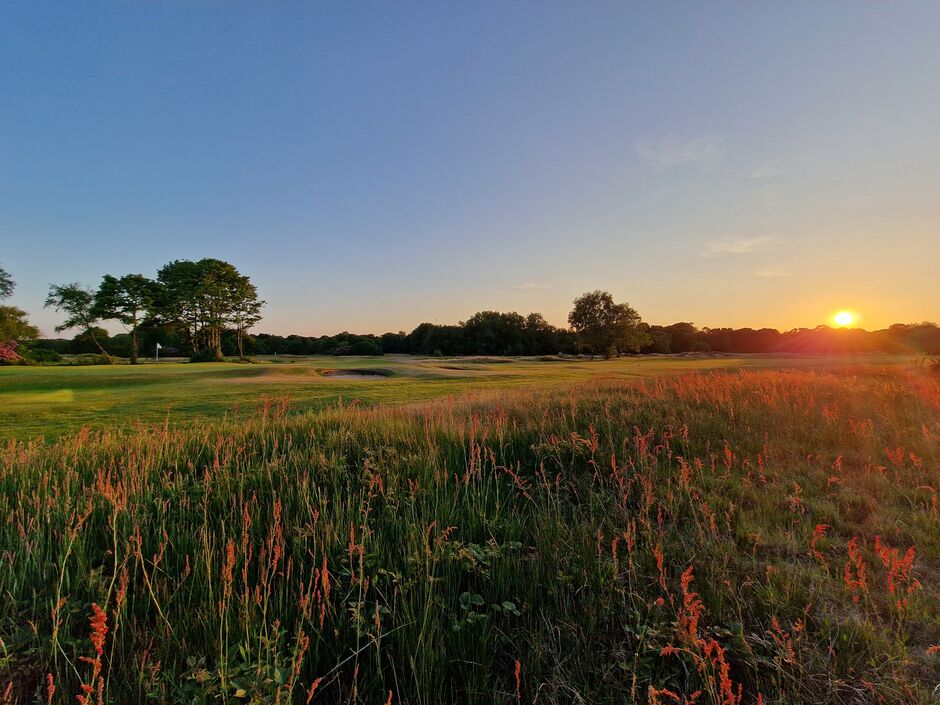
Best regards,
Mark Duncalf
General Manager




